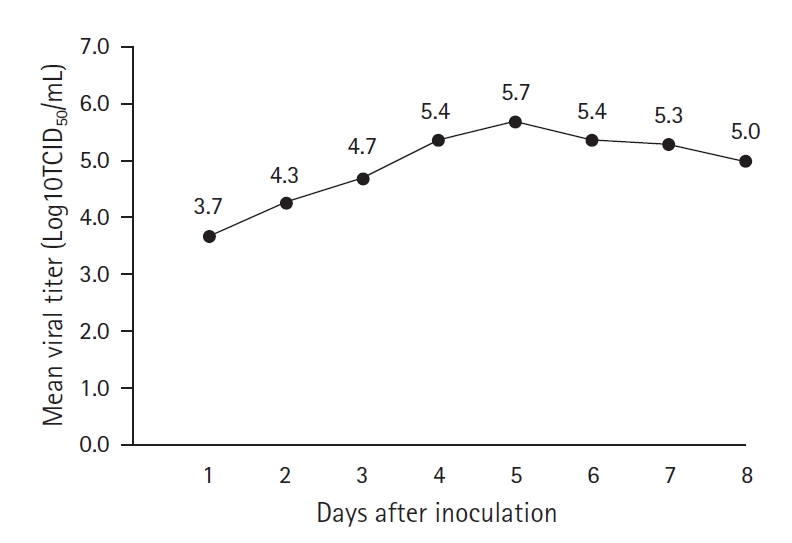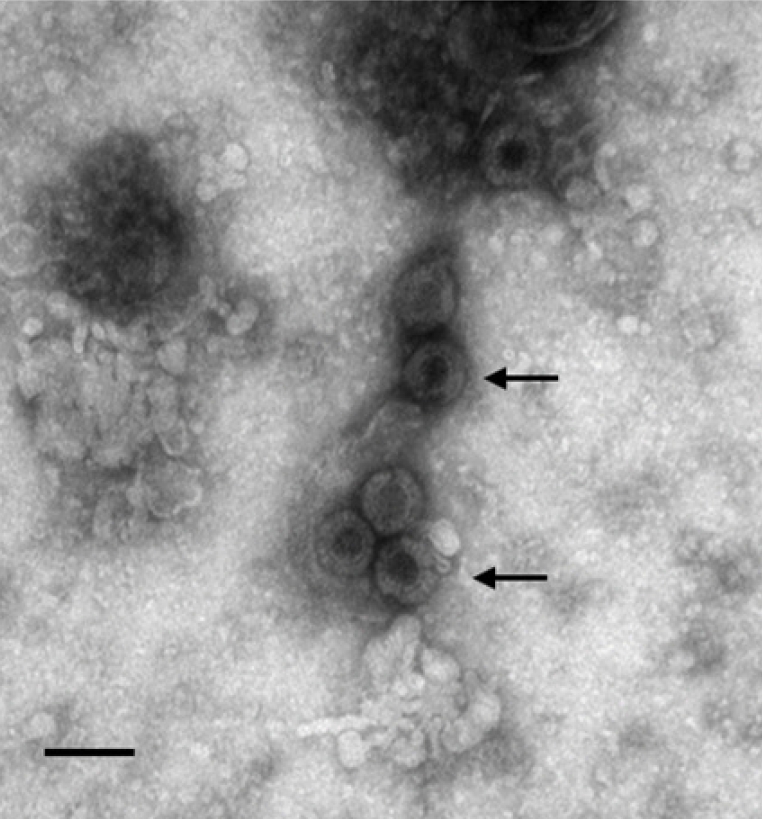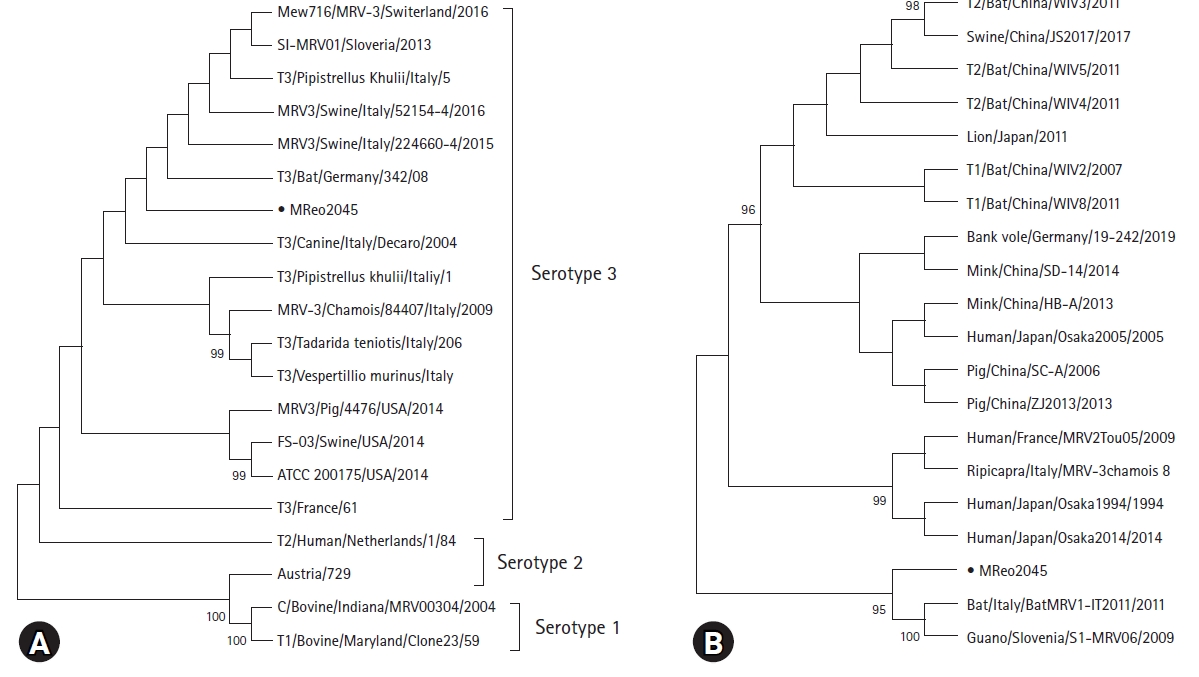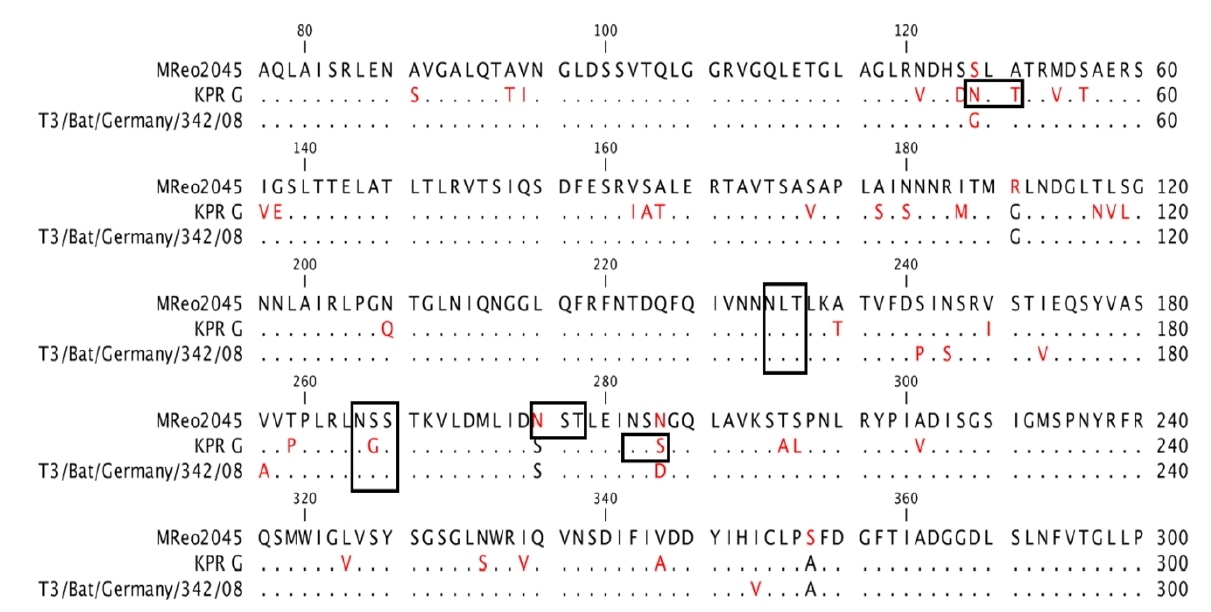1. King AMQ, Adams MJ, Carstens EB, Lefkowitz EJ. Family. Reoviridae. In: King AMQ, Lefkowitz E; Adams MJ, Carstens EB (eds.). Virus Taxonomy. pp. 541-637, Elsevier, San Diego, 2011.
2. Attoui H, Billoir F, Cantaloube JF, Biagini P, de Micco P, de Lamballerie X. Strategies for the sequence determination of viral dsRNA genomes. J Virol Methods 2000;89:147-158.


3. Ogasawara Y, Ueda H, Kikuchi N, Kirisawa R. Isolation and genomic characterization of a novel orthoreovirus from a brown-eared bulbul (Hypsipetes amaurotis) in Japan. J Gen Virol 2015;96(Pt 7):1777-1786.


4. Fields BN, Knipe DM, Howley PM. Fields Virology. 6th ed. pp. 1304-1346, Wolters Kluwer Health/Lippincott Williams & Wilkins, Philadelphia, 2013.
6. Lee PW, Hayes EC, Joklik WK. Protein sigma 1 is the reovirus cell attachment protein. Virology 1981;108:156-163.


8. Yang XL, Tan B, Wang B, Li W, Wang N, Luo CM, Wang MN, Zhang W, Li B, Peng C, Ge XY, Zhang LB, Shi ZL. Isolation and identification of bat viruses closely related to human, porcine and mink orthoreoviruses. J Gen Virol 2015;96:3525-3531.



10. Uchiyama A, Besselsen DG. Detection of Reovirus type 3 by use of fluorogenic nuclease reverse transcriptase polymerase chain reaction. Lab Anim 2003;37:352-359.


11. Kwon HJ, Kim HH, Kim HJ, Park JG, Son KY, Jung J, Lee WS, Cho KO, Park SJ, Kang MI. Detection and molecular characterization of porcine type 3 orthoreoviruses circulating in South Korea. Vet Microbiol 2012;157:456-463.


12. Wright MH, Cera LM, Sarich NA, Lednicky JA. Reverse transcription-polymerase chain reaction detection and nucleic acid sequence confirmation of reovirus infection in laboratory mice with discordant serologic indirect immunofluorescence assay and enzyme-linked immunosorbent assay results. Comp Med 2004;54:410-417.

14. Kurogi H, Inaba Y, Tanaka Y, Ito Y, Sato K, Omori T. Isolation and properties of reovirus from cattle in an outbreak of acute respiratory disease. Natl Inst Anim Health Q (Tokyo) 1976;16:39-48.


16. Li X, Sun X, Lu C, Kuang D, Han Y, Wang W, Tong P, Li N, Zhou J, Dai J. Isolation and identification of two new strains of mammalian orthoreovirus from Chinese tree shrews. Arch Virol 2020;165:1541-1550.


17. Kokubu T, Takahashi T, Takamura K, Yasuda H, Hiramatsu K, Nakai M. Isolation of reovirus type 3 from dogs with diarrhea. J Vet Med Sci 1993;55:453-454.


18. Thimmasandra Narayanappa A, Sooryanarain H, Deventhiran J, Cao D, Ammayappan Venkatachalam B, Kambiranda D, LeRoith T, Heffron CL, Lindstrom N, Hall K, Jobst P, Sexton C, Meng XJ, Elankumaran S. A novel pathogenic Mammalian orthoreovirus from diarrheic pigs and Swine blood meal in the United States. mBio 2015;6:e00593-15.



19. Xu J, Huang XY, Li XF, Wang WG, Yin AG, Xia XS, Sun XM, Dai XJ. [Isolation and identification of Tupaia orthoreovirus]. Dongwuxue Yanjiu 2013 34:116-120. Chinese.
20. Harima H, Sasaki M, Kajihara M, Gonzalez G, Simulundu E, Bwalya EC, Qiu Y, Okuya K, Isono M, Orba Y, Takada A, Hang'ombe BM, Mweene AS, Sawa H. Characterization of mammalian orthoreoviruses isolated from faeces of pigs in Zambia. J Gen Virol 2020;101:1027-1036.


21. Tyler KL, McPhee DA, Fields BN. Distinct pathways of viral spread in the host determined by reovirus S1 gene segment. Science 1986;233:770-774.






















 PDF Links
PDF Links PubReader
PubReader ePub Link
ePub Link Full text via DOI
Full text via DOI Download Citation
Download Citation Print
Print



